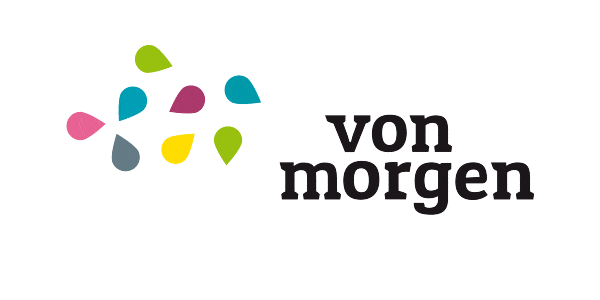Many Mapping-Platforms have started since 2014. In the meantime, our map of tomorrow is the most used mapping platform in Germany, but there are many other platforms in other (European) countries. How do we cooperate in a solidarian world of tomorrow? Here I want to start a discussion about the advantages of each platform and what innovations and function might work the best.
Inhalt
Actual Updates
2.6.2020: We had the first global Webinar with the Transitionmovement and Degrowthmovement.
We searched for the most relevant mapping plattforms, which we want to collect from now on. (In India we could not find any mapping initiative. In France there is mainly gogocarto in use an in Mexico people used Kumu. And Greenmap is back with a new plattform, developed in Berlin.)
What Mappingplatforms do you know or use?
Here you find a collection of some more mapping tools.
How Map of Tomorrow started
Before we started in 2013 the Map of Tomorrow, we did a lot of research on other mapping projects worldwide and got a lot of solidarian support from existing Mapping-Organizations like Open Greenmaps and Bluepingu. At this time there was a huge mapping boom, and while in Germany we find a a concentration of some projects, in other European countries can be found lots of alternatives.

Cross-Thematic mapping plattforms
There are more than thousand maps for social-ecological transformation worldwide, but most of them have a regional or thematic focus like ecovillages, organic-shops, urban gardens and so on. We collected some of them here:
In this article we only focus on plattforms, which integrate all themes of social-ecological transformation
Map of Tomorrow
You all know this map. Some statistic from July 2019
| Number of Entries | 7117 |
| Number of Events | 262 |
| Number of registered Users | 525 |
| Number of Tags | 7224 |
Advantage: fast flexibility
- Crowd-Sourced: Everybody can add and edit anything, even without having to log in
- Hashtags: Organizations and movements can use the map for whatever they need and group their entries by hashtags
- Made to share: Any map-view, entry and filter can be easily shared by URL and in iframes. (like in the Gloassar)
Disadvantage: little overview
- No legend: Without clear categories and a legend, so users don’t know what to look for.
- No Icons or categories -> hard to filter for general topics like “education”
Transiscope
Mainly used in French speaking countries of Europe
This statstic is just an estimation
| Number of Entries (with all connected sources) | 25.000 |
| Number of Events | none |
| Number of registered Users | ? |
| Number of Tags/ categories | ca. 25 |
Advantage: Good categorized content
- 8 clear categories show all content
- Is connected to presdecheznous.fr an 10 other plattforms
- Nice and professional surface
Disadvantage: Very slow loading
- Very slow, probably because of the amount of content and connections.
Initiatives de Transition (Belgium)
Seems to be the same system like Transiscope
| Number of Entries (with all connected sources) | 190 |
| Number of Events | none |
| Number of registered Users | ? |
| Number of Tags/ categories | ca. 25 |
Advantage: Good categorized content
- Same as Transiscope
- You can add things without having to log in.
Disadvantage: Very slow loading
- Same As Transicope
- Very few entries
Open Greenmap
The system originally comes from New York but has spread around the world within the last 20 years. It is famous because of its set of icons, which we also use, when we print maps of tomorrow.
Green Map System originally comes from New York but has spread around the world within the last 25 years. It is famous because of its set of icons, which we also use, when we print maps of tomorrow. This website includes both interactive and print maps made locally in 65 countries, and shares different mapping platforms which can also use their icons at http://GreenMap.org/make-map/interactive-mapping
OGM2: The new platform is now available at http://new.opengreenmap.org.
The system originally comes from New York but has spread around the world within the last 20 years. It is famous because of its set of icons, which we also use, when we print maps of tomorrow.
Advantage: Icons and experience
- Started in the 90s
- Large Network
Disadvantage: Complex
- Over 60 Icons is hard to remember and overwhelming for new users.
- Entries are attached to certain maps, but only a fix team can edit the map.
Fazit: We need Interfaces
All the mapping platforms have their advantages and their target-group. But none of them is good for all. Prezdecheznous has the most content and the clearest categories, but does not help small networks to map themselves. Map of tomorrow makes it “Quick and dirty”, but lacks a clear overview.
- Transition Connect is one of those approaches to connect them all, but has no funding. The Commons-API-Project is a similar approach.
- Update Jan. 2020: FairSync (coordinated by Fairkom e.V. ) starts to become a huge Connecting process
- Update Jan. 2020: InCommon is a similar networking approach comming from Belgium.

2014 hatte bereits ein großer “Mapping the Alternatives” Prozess begonnen, mit dem Titel TransforMap. Dabei wurden auch einige Plattformen gesammelt.

… It is famous because of its set of icons, which we also use, when we print maps of tomorrow.